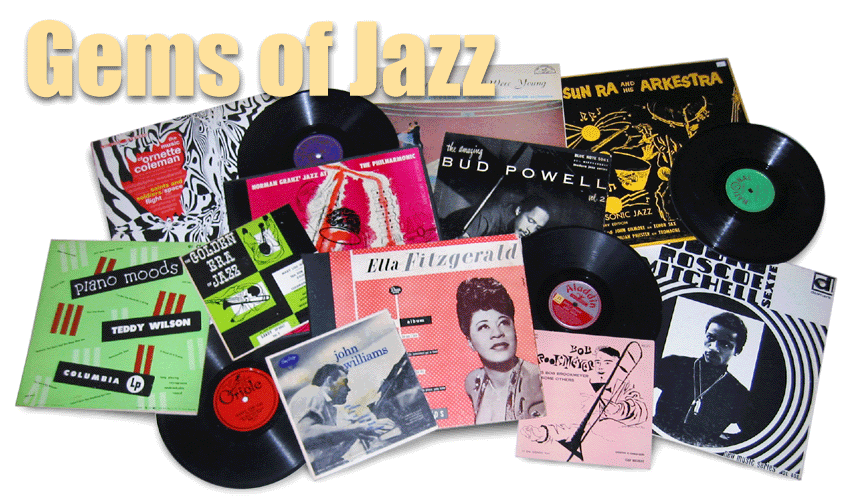Here's a record whose cover I've seen posted around the jazz bloggosphere and on collector sites, but no one seems to have uploaded the music. I have a copy, so here's what the John Plonsky Quintet sounded like.
John Plonsky was a journeyman trumpet player, composer and arranger from the West Coast who had recorded with Ray Bauduc and Nappy Lamare in the '40s, starting out in traditional and swing styles. He later switched to a more bop-oriented approach after coming to the East Coast with Alvy West's Little Band. This recording was only his third time in the studio during his career, and it was his first time as a leader. It would be his last. What happened to John Plonsky after this is unknown, at least to me.
There are several aspects to this record that make it stand out. The first is purely cosmetic, but I confess it is the sole reason I picked this record up: its decidedly unhip cover. An apotheosis of bad concept, design and execution, the album front has the band, looking tentative and uncomfortable, superimposed over a snowy background. These guys are cool, get it? Golden Crest, the album's label, is the outfit that produced all those bright red and yellow children's records that I remember from my youth. Clearly jazz was a stretch for them, despite the fact that they issued a number of good jazz LPs. "Cool Man Cool" made me laugh, and I laid out four bits for it at my radio station's music sale a few years ago.
The second standout feature of "Cool Man Cool" is the band's instrumentation. With an electric accordion and a baritone saxophone backing up the trumpet's lead, you'd think the sound would be quite annoying. But no – it is remarkably coherent and nuanced. Plonsky talks about how accordionist Dominic Cortese muffles his instrument to "eliminate the reedy sound." He does and the result is very interesting.
Two additional notes. Dizzy Gillespie recorded as a sideman for a vocalist back in the mid'-40s and, because he was under contract to Victor, used a pseudonym on the label. They name he chose? "John Plonsky."
The bassist on "Cool Man Cool" is Chet Amsterdam. I knew him briefly when I hosted a weekly live jazz program over WJFF in the '90s. Chet would occasionally play in the show's rhythm section, but was in poor health, suffering from what one of my other musician friends describe as the "habit" that afflicted so many great players from the '40s and '50s. He was, at one time, an excellent player with much promise. See the review from the July 1957 issue of Metronome above.
As always, these files were ripped from the original vinyl with only a very minor cleaning up of pops and crackles.
John Plonsky, trumpet
Carl Janelli, baritone saxophone
Dominic Cortese, electric accordian
Chet Amsterdam, bass
Mel Zelnick, drums
New York, NY; March 5, 1957
Golden Crest CR 3014
1. Laurel and Hardy (Plonsky)
1. Laurel and Hardy (Plonsky)
2. The Lady Is a Tramp
3. But Not for Me
4. Putting on the Ritz
5. Just in Time
6. Calico Shoes (Plonsky)
7. Angel Hair (Plonsky)
8. How About You?
9. Funkier Than Thou (Plonsky)
10. I'll Take Romance
11. Blonde Caboose (Plonsky)
Find it here: http://www.mediafire.com/?i8abhlls37xnbl8



















